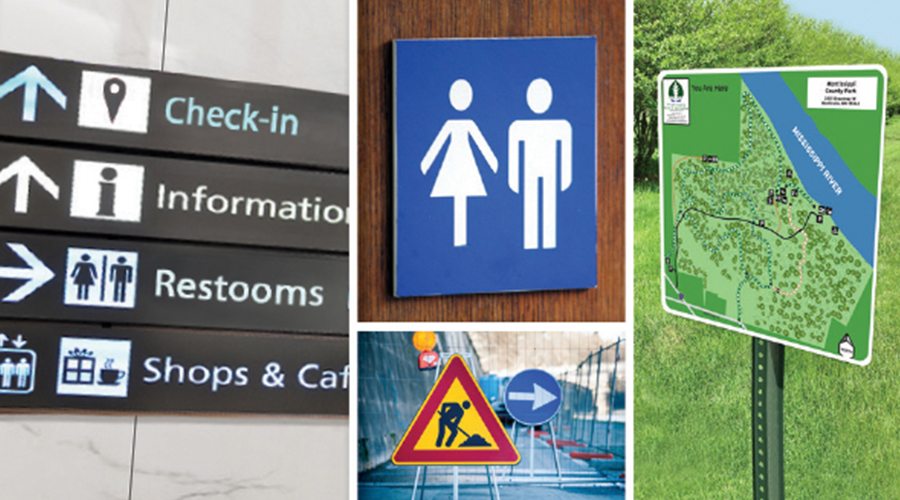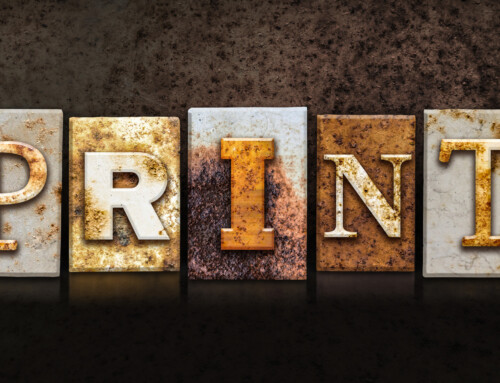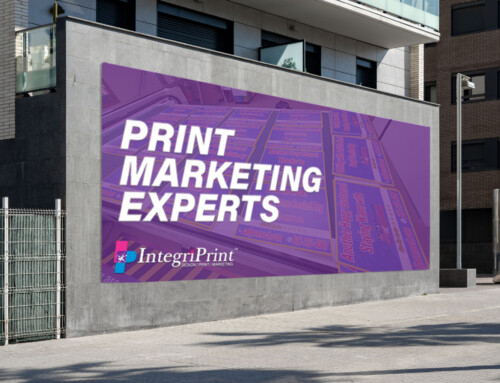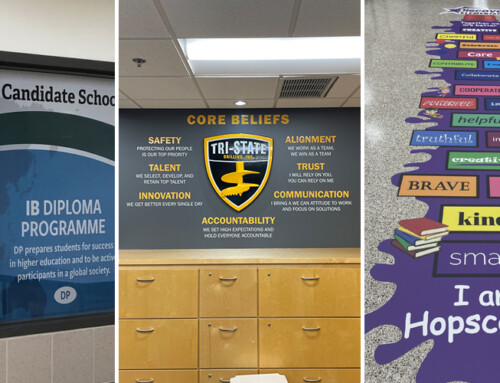Large corporations, manufacturing facilities, healthcare and municipalities all utilize wayfinding signage to help in daily communication. This type of sign communication consists of printed materials including; indoor/outdoor directional signs, wall displays, floor graphics, storefront signage and more. A thought out strategy for wayfinding signage can provide a positive experience and get people where they need to be efficiently.
From modernly designed welcome signs to conference room wall plaques, your wayfinding signage strategy should consist of these four steps to get the most out of your signage.
1. Purpose
Considering the overall purpose of wayfinding signage sets the foundation for strategy. Different types of signage require different guidelines and recommendations.
Informative signage is typically a single sign or display to help educate on a certain topic or object. Directional wayfinding signage consists of multiple types of signs working together including informative signs for maps, floor graphics and mounted signage for directional guidance.
If the purpose of the sign is something regulatory, there may be legal elements that must be utilized in the signage such as certain symbols or wording. If the signage is for directional or informative purposes, then you have more flexibility for what can be used for the design, size and messaging.
2. Design
Successful wayfinding signage is easy to see, read and comprehend. Two of the most important design elements to wayfinding signage are the sign size and the size of the information on the sign. How far away can the viewer be and still interpret the sign? Make sure that the words are large enough to be seen from the appropriate distance.
The size of the text on a door plaque can be seen and read from only a few feet away. This is ideal for its purpose. That same size sign and text would not work well as an outdoor sign on a business by a highway, because no one would be able to see or read the sign as they drive by.
If color is not needed for identification purposes in a wayfinding sign strategy, wall displays, floor graphics and other signage should be branded in the colors of the company or a color theme that best fits the facility. Utilizing the company colors, value statements and logos to accent directional signs and displays creates a professional feel throughout the location. Be sure to use contrasting colors for your sign and text design. Colors that do not contrast enough blend together and make it more difficult to read the information on the sign.
3. Functionality
What should the signage be saying or instructing the viewer to do?
When a large facility has an effective wayfinding strategy, people utilizing the space are comfortable and are easily guided along the way with informative displays and direction.
For organizations, functionality plays an important role with wayfinding signage. With multiple departments within one building, wayfinding signage is an effective tool for clear and concise visual communication. Color-coding departments on a kiosk or map display provides an easy way to identify specific paths and room locations. This combined with directional signage for guidance and room plaques for identification will successfully direct traffic through a building.
Could the signage provide an interactive element that would further educate or instruct the viewer? A Quick Response Code (QR Code) can provide an interactive and informational experience to the viewer. When a viewer scans the QR Code with their phone, a link pops up on their screen allowing them to view information online or potentially submit information to an online form.
Wayfinding signage becomes a multi-level tool when a QR Code is implemented. Not only does the signage help assist viewers in the physical world, but it allows those viewers to interact with an organization or municipality in the digital world as well. Viewers can download electronic files, fill out forms and watch videos, opening the doors for further engagement between organizations and consumers.
4. Location
Consider the best viewing location for your wayfinding signage. Where will it be most visible for the best interpretation? A wall mounted plaque next to a room is the ideal location for labeling a conference room, but where should your wayfinding signage be displayed? If there are multiple signs used within a wayfinding strategy, keeping a consistent placement of the sign is important. Door plaques should be at a consistent height/location and directional wall displays should be located at every intersecting hallway and easily seen from all directions.
If your company is in healthcare or manufacturing, using multiple locations to control the flow of traffic may be needed. At a healthcare facility wall mounted, ceiling mounted and portable signage is used in conjunction to provide a large amount of information and directional communication for viewers.
Health and safety has become very important for many businesses, so providing clear communication on what your company is doing to be safe and what people within the building are expected to do should be communicated on multiple levels. The location of this type of signage is also important and should be located at the main entrance of the business for visitors and strategically placed throughout the building.
If you have questions or would like to start a conversation on your own wayfinding sign communication strategy, give us a call at 763-682-3750 or shoot us an email at clientcare@integriprint.com.







Leave A Comment